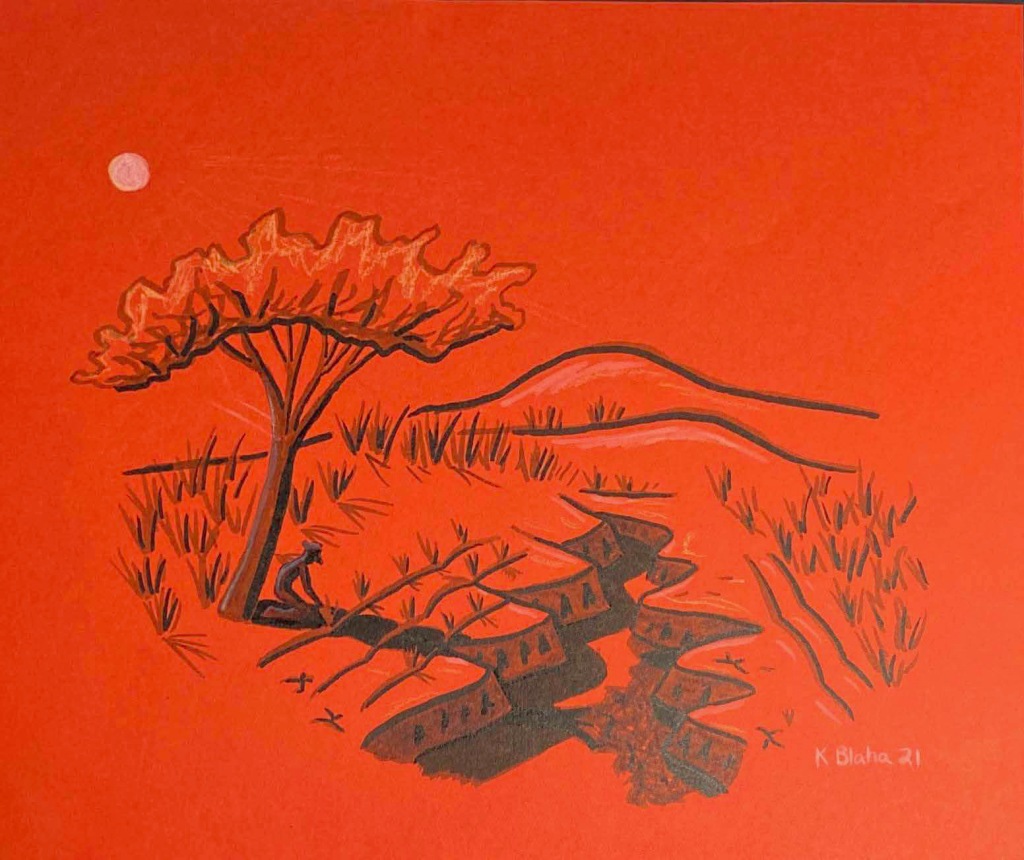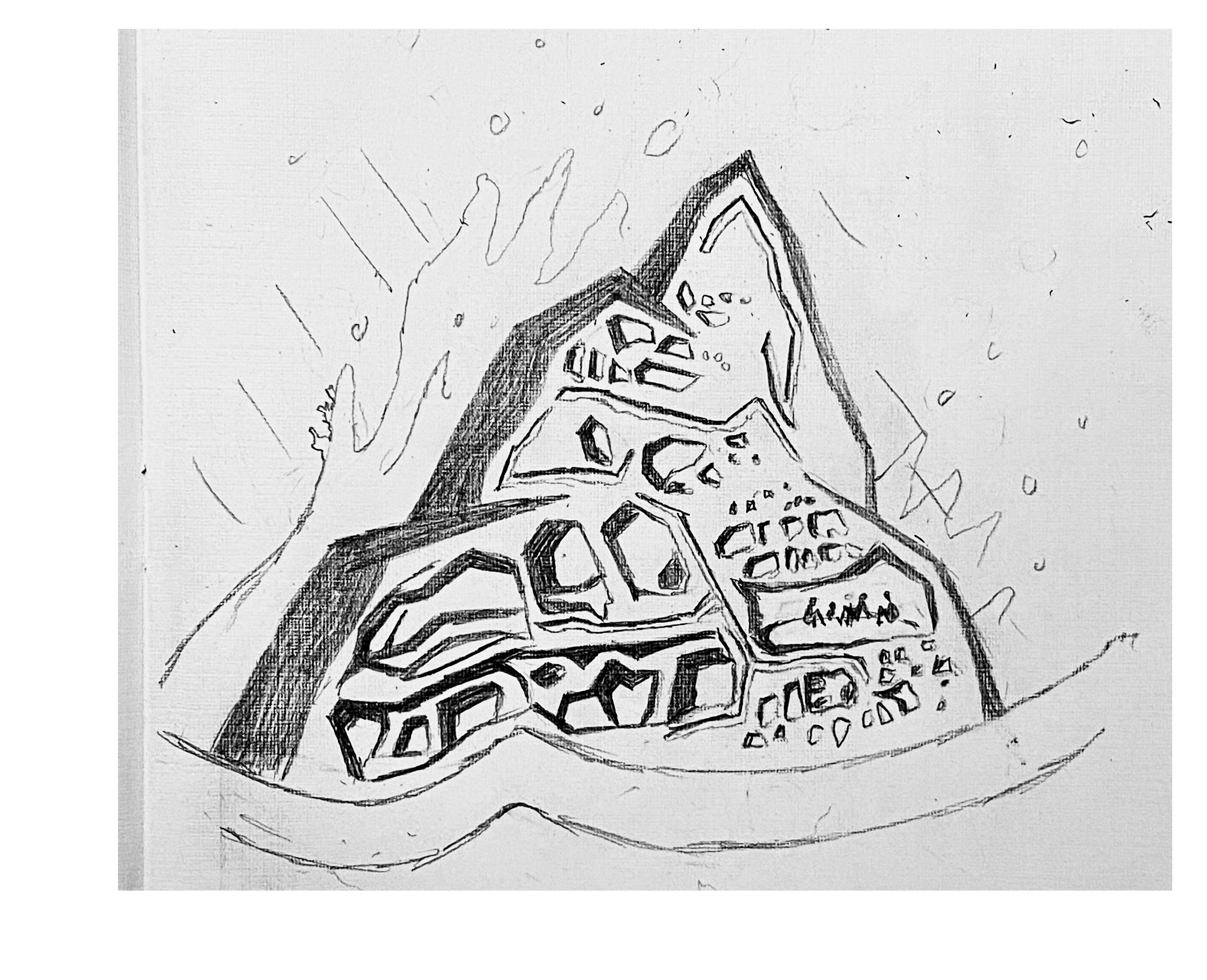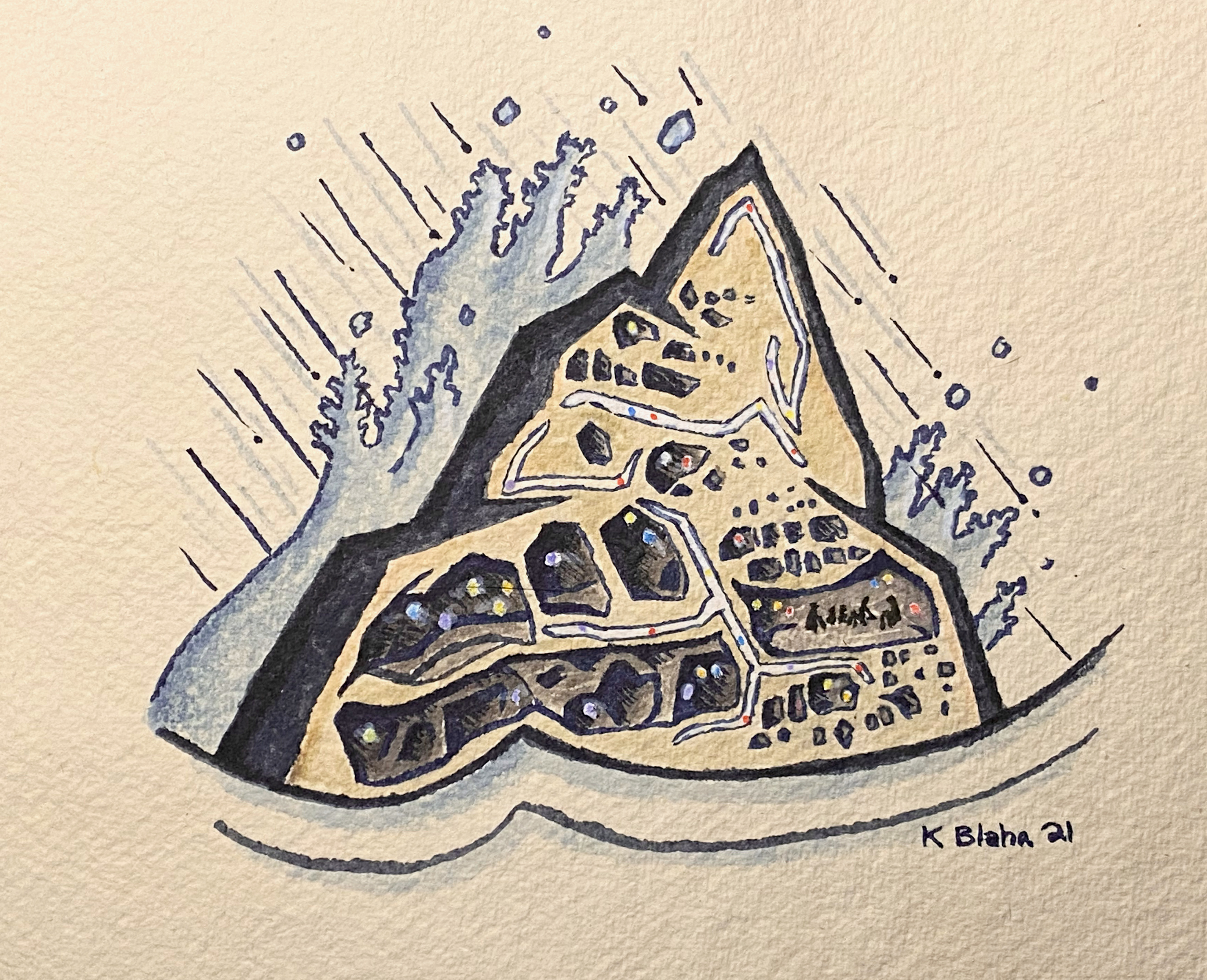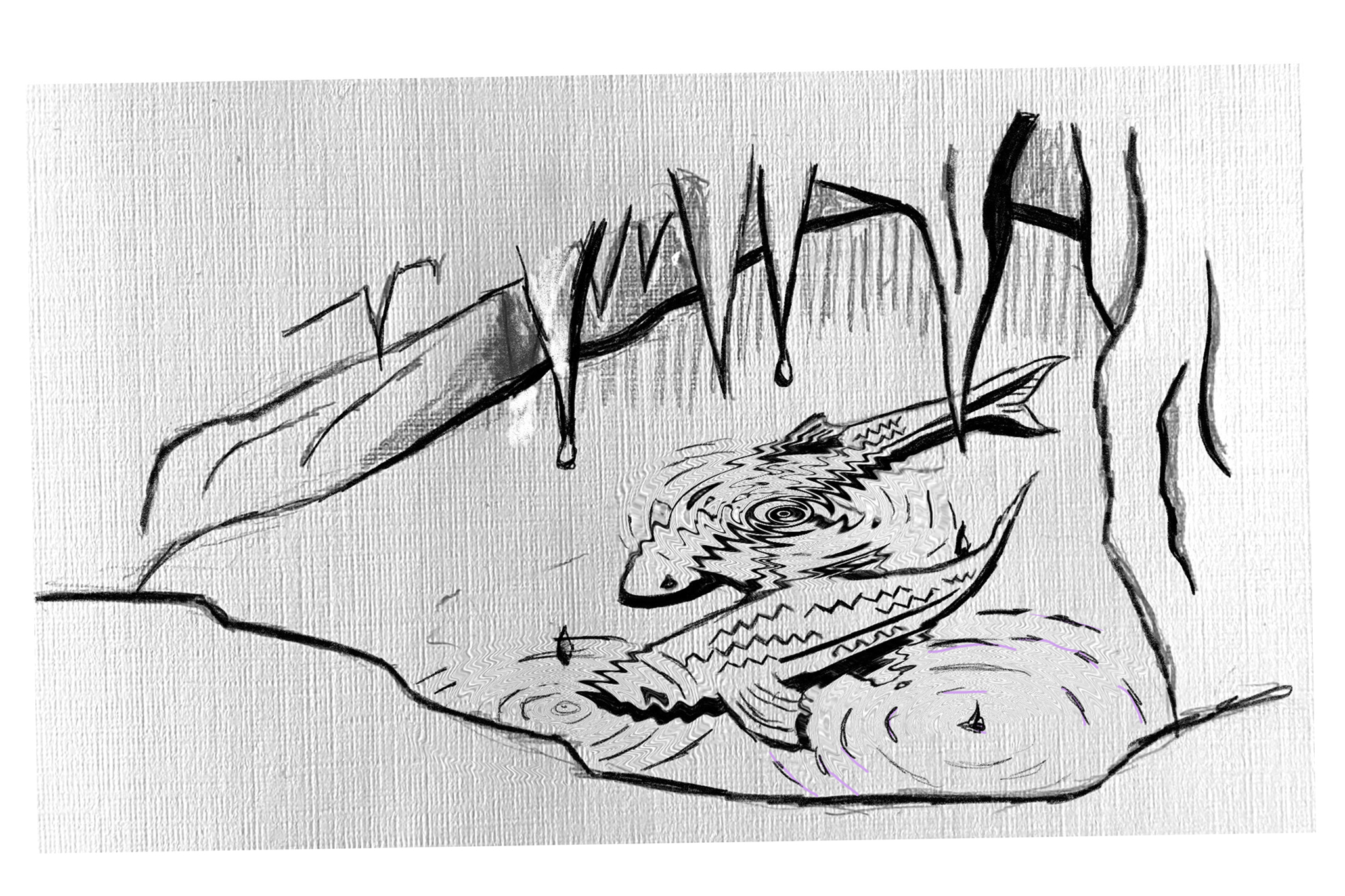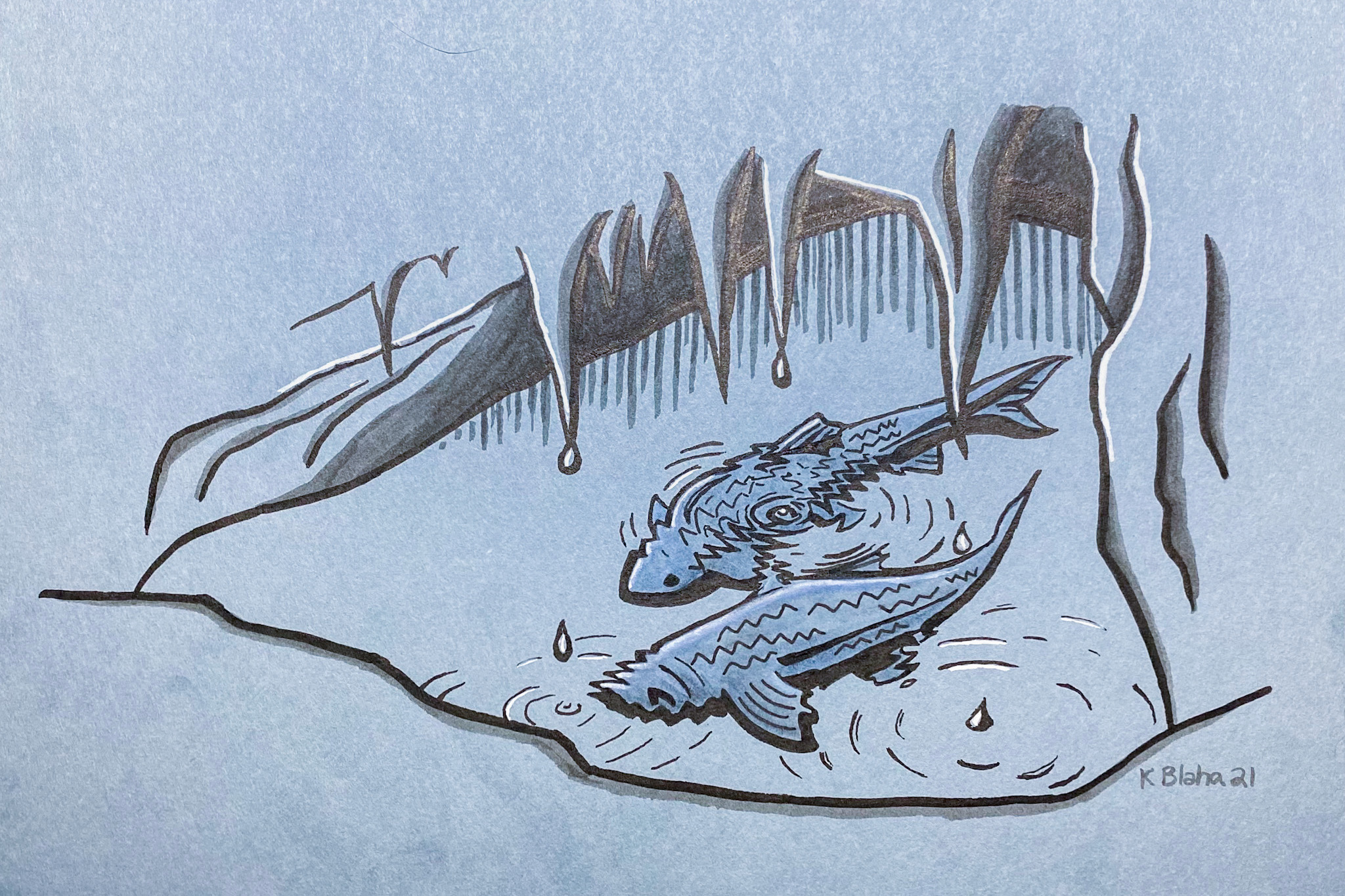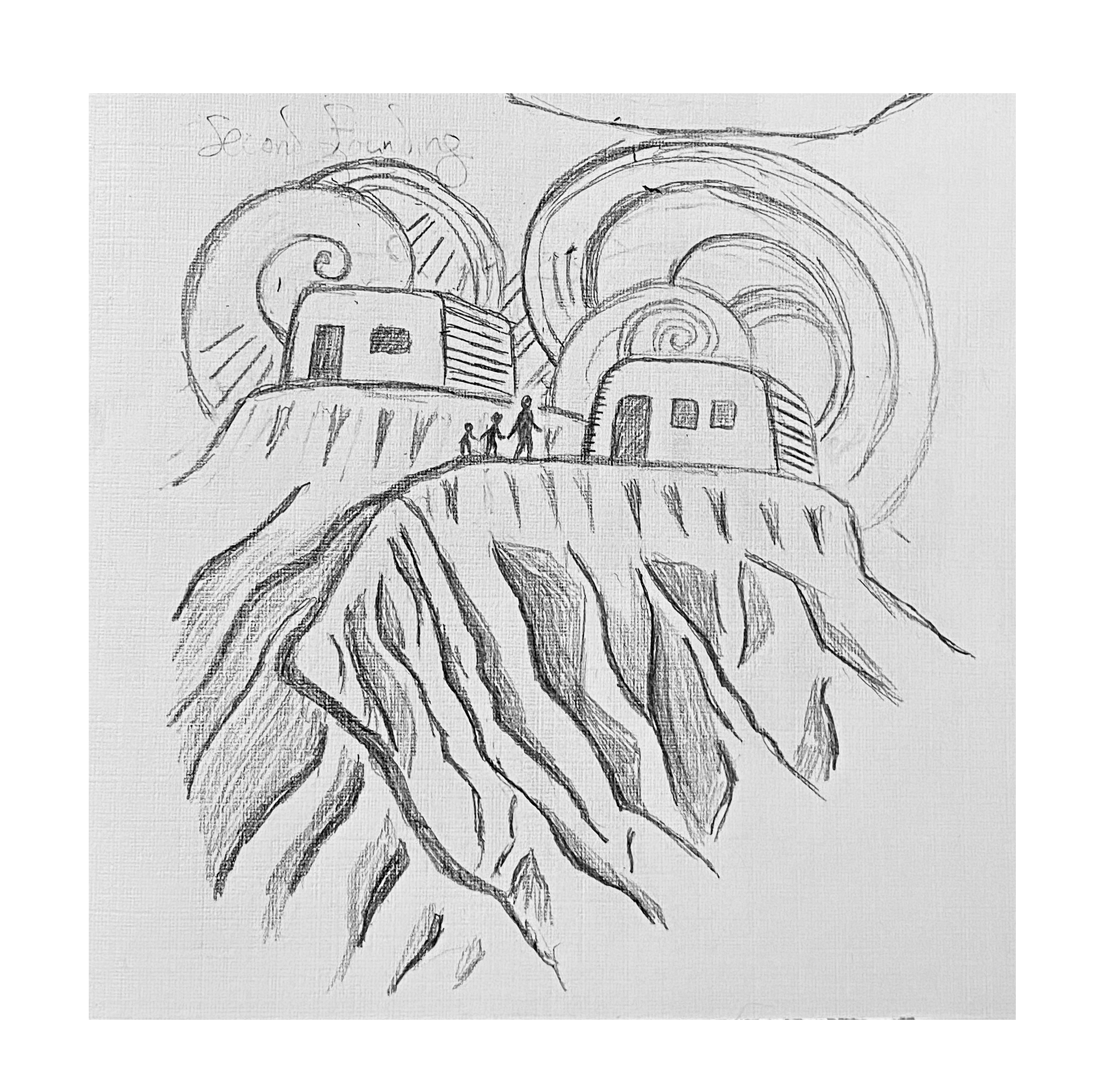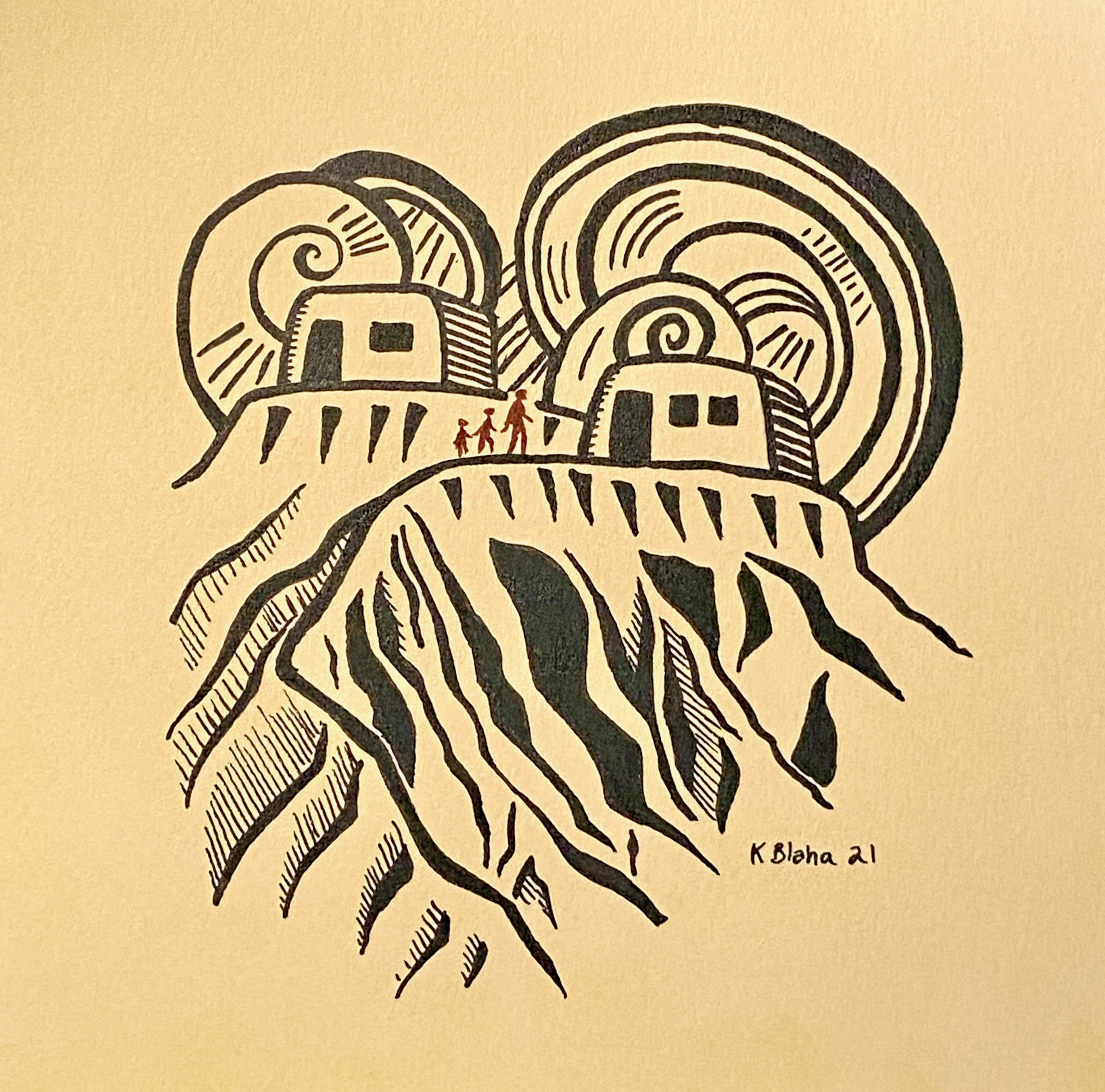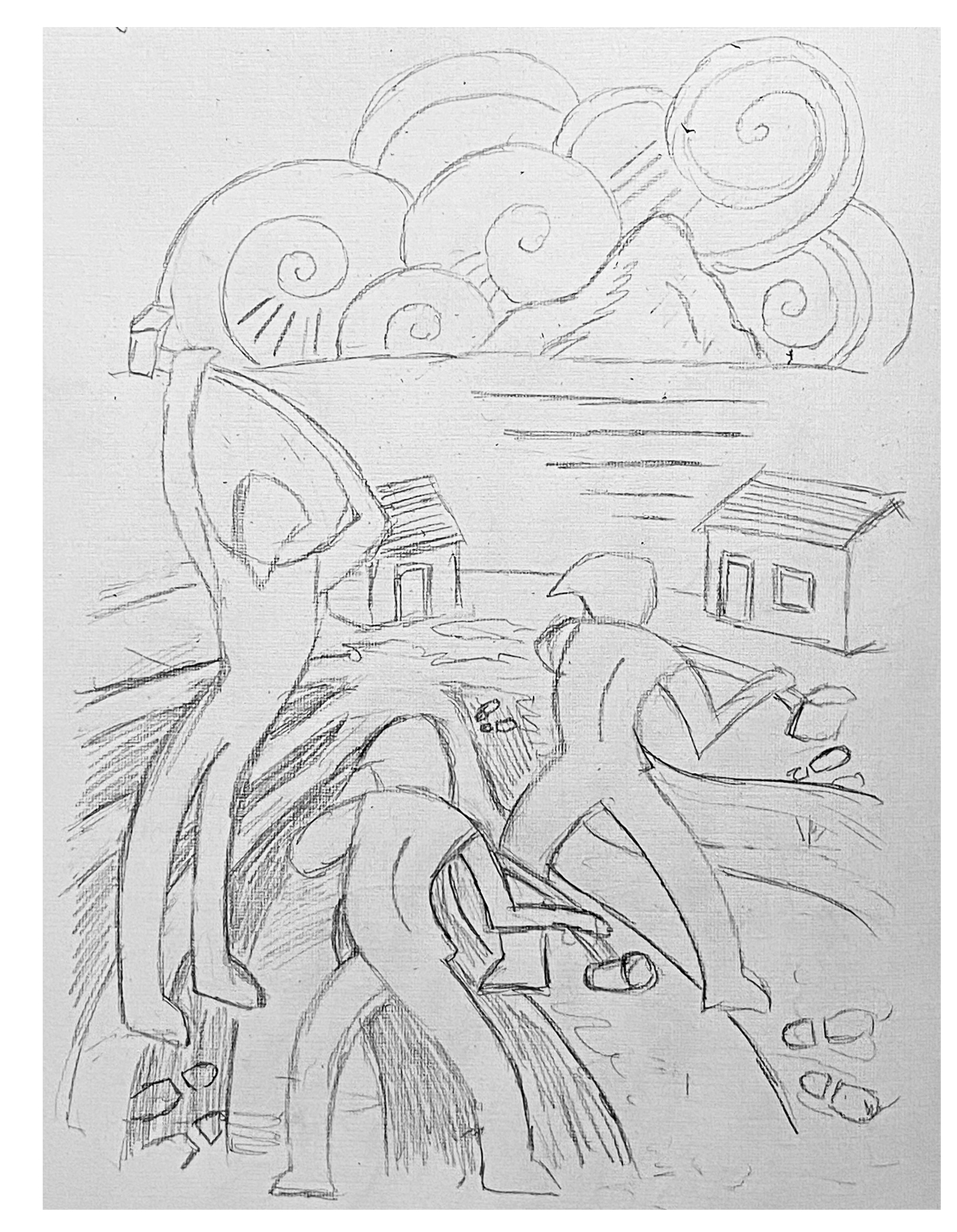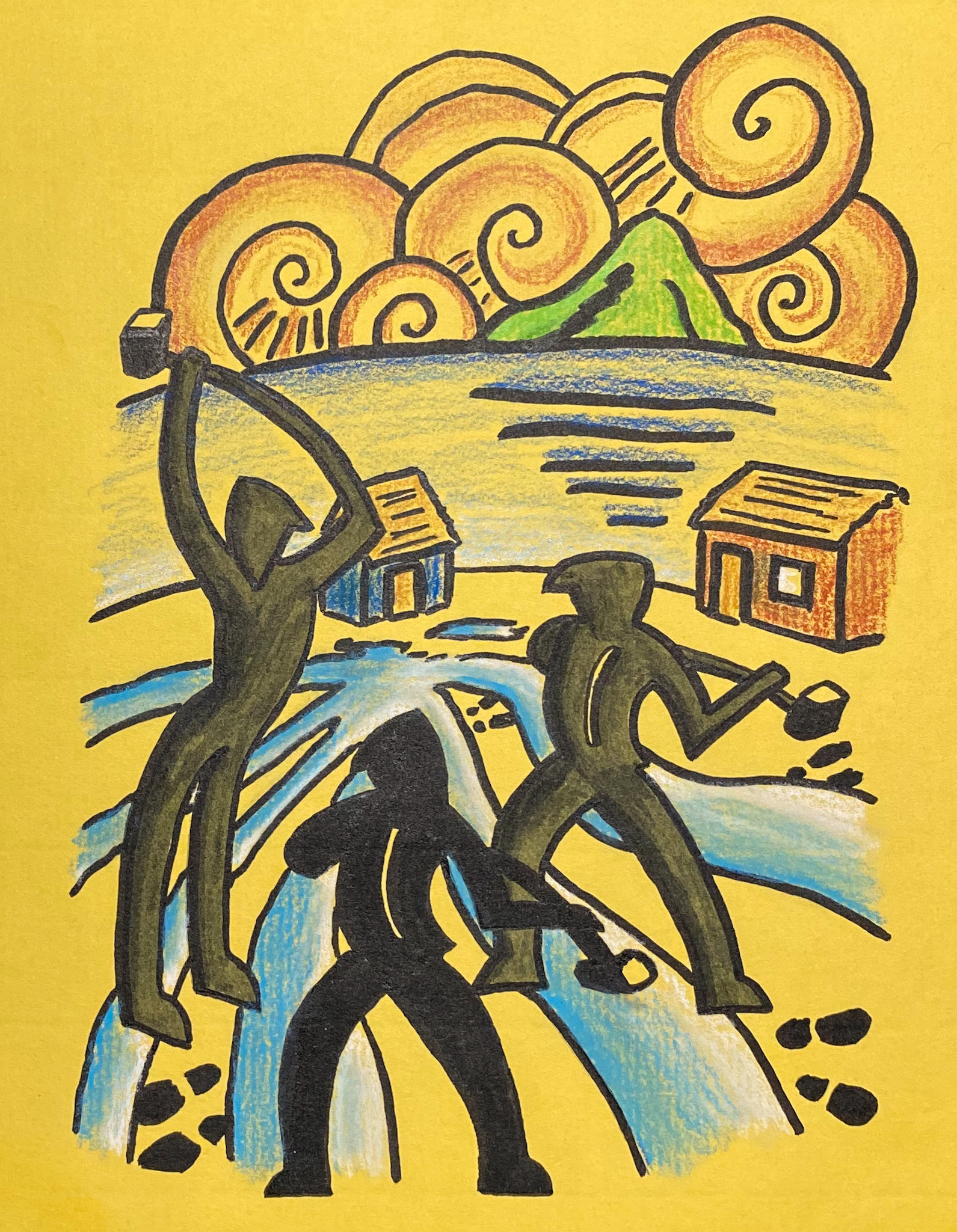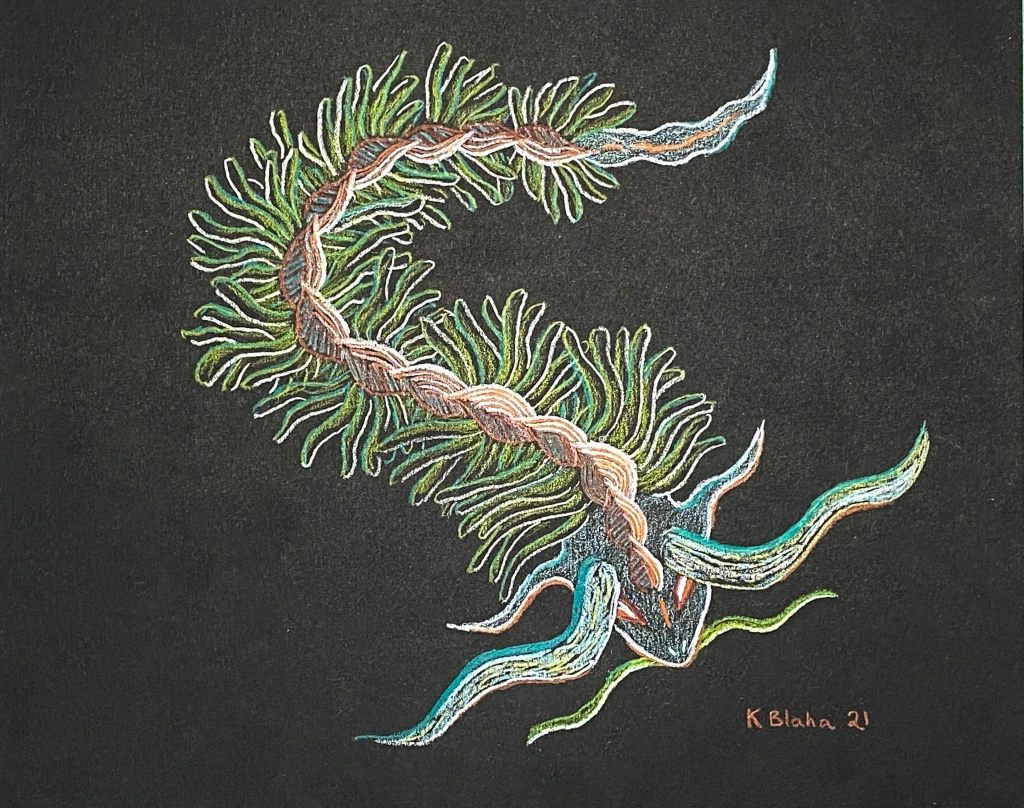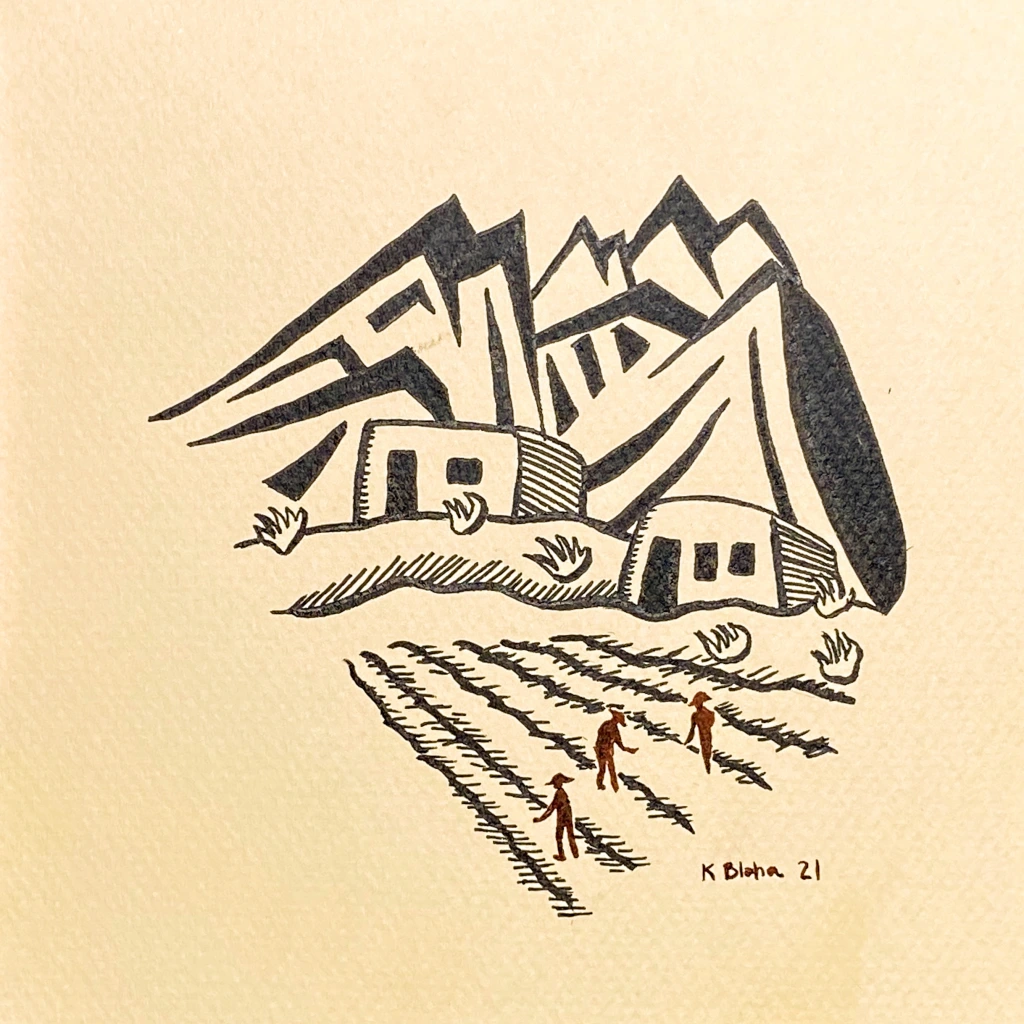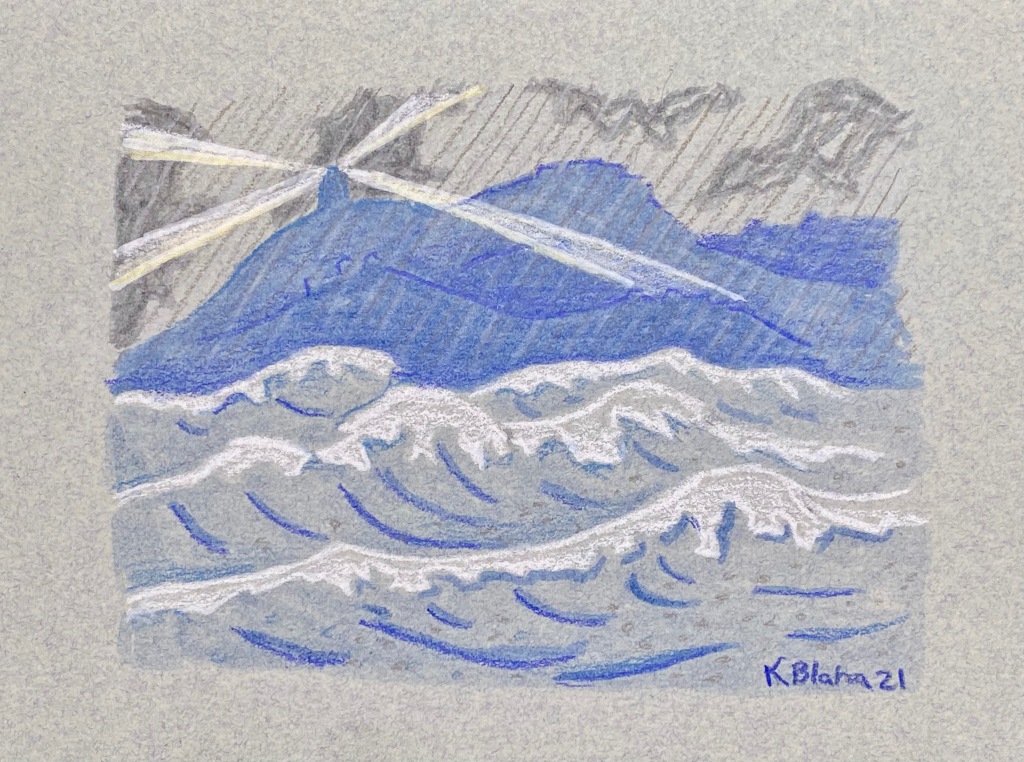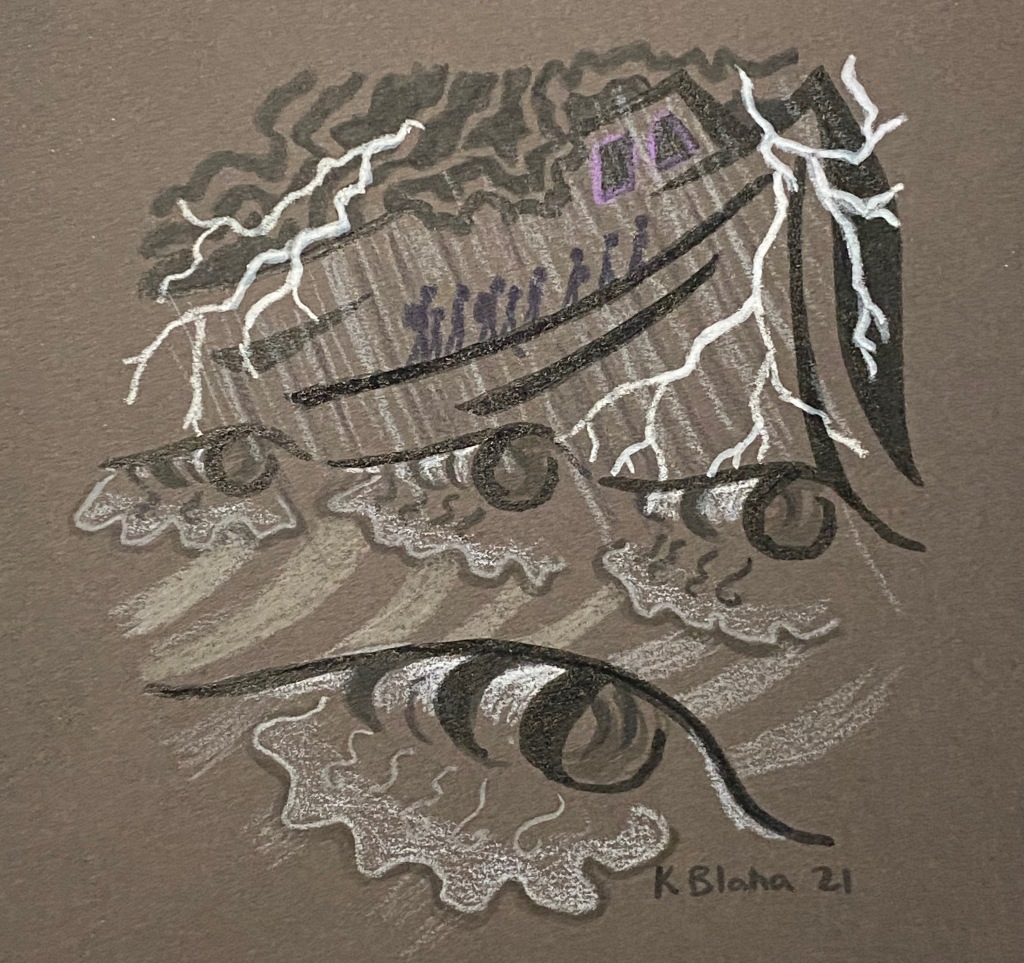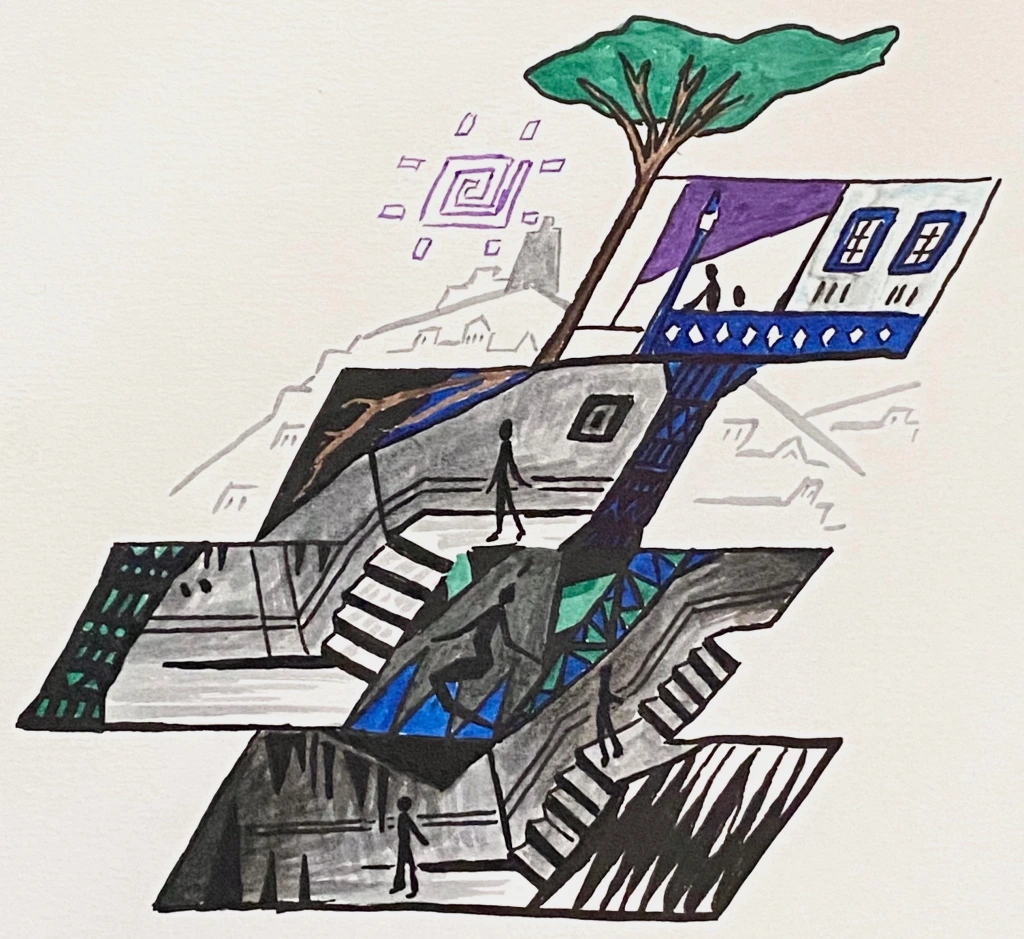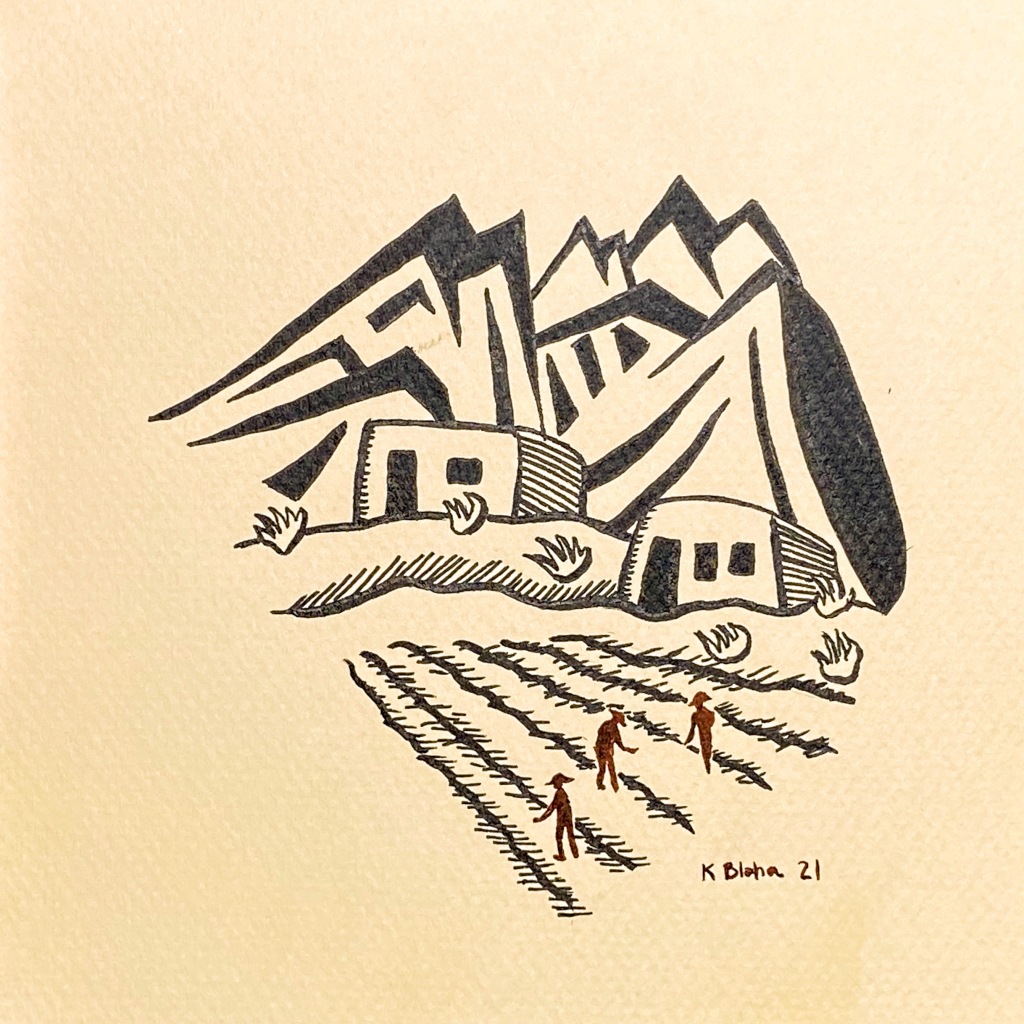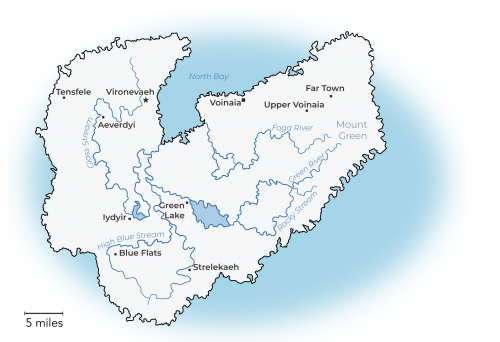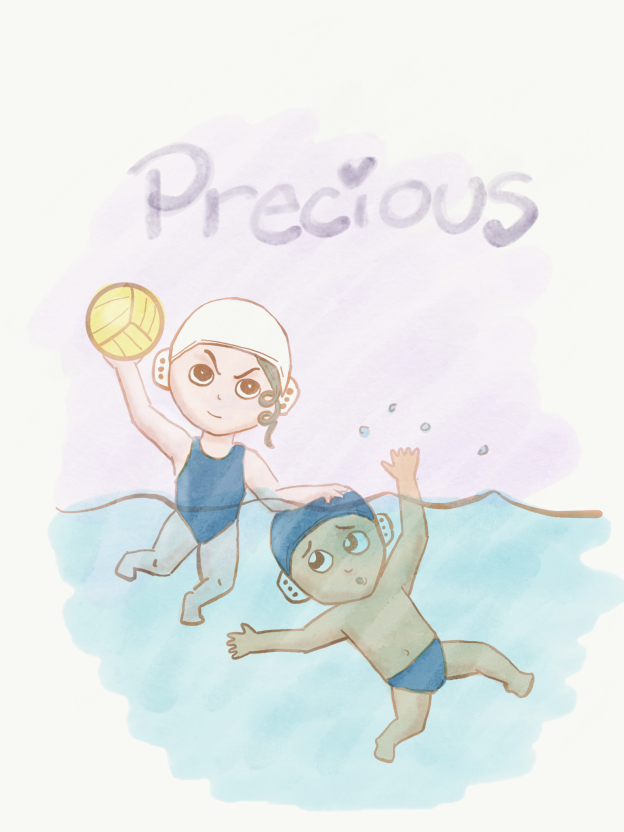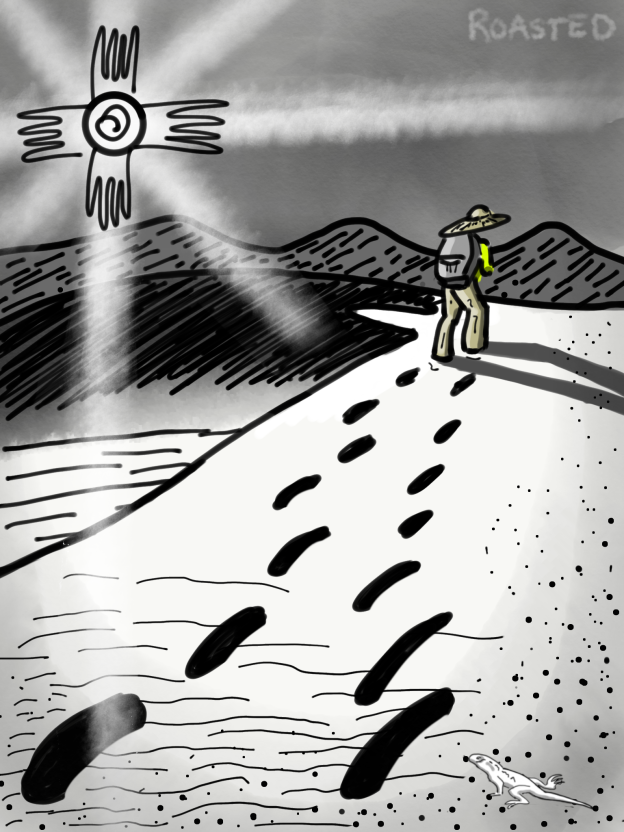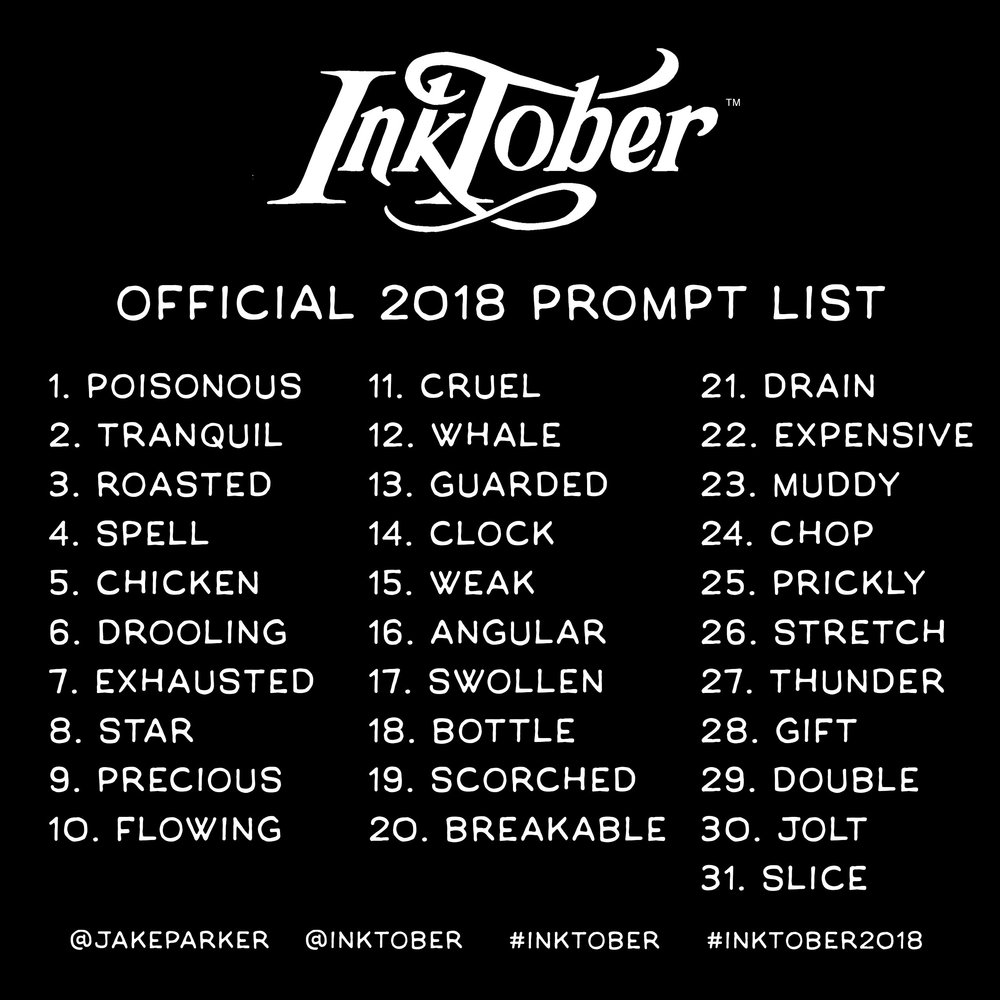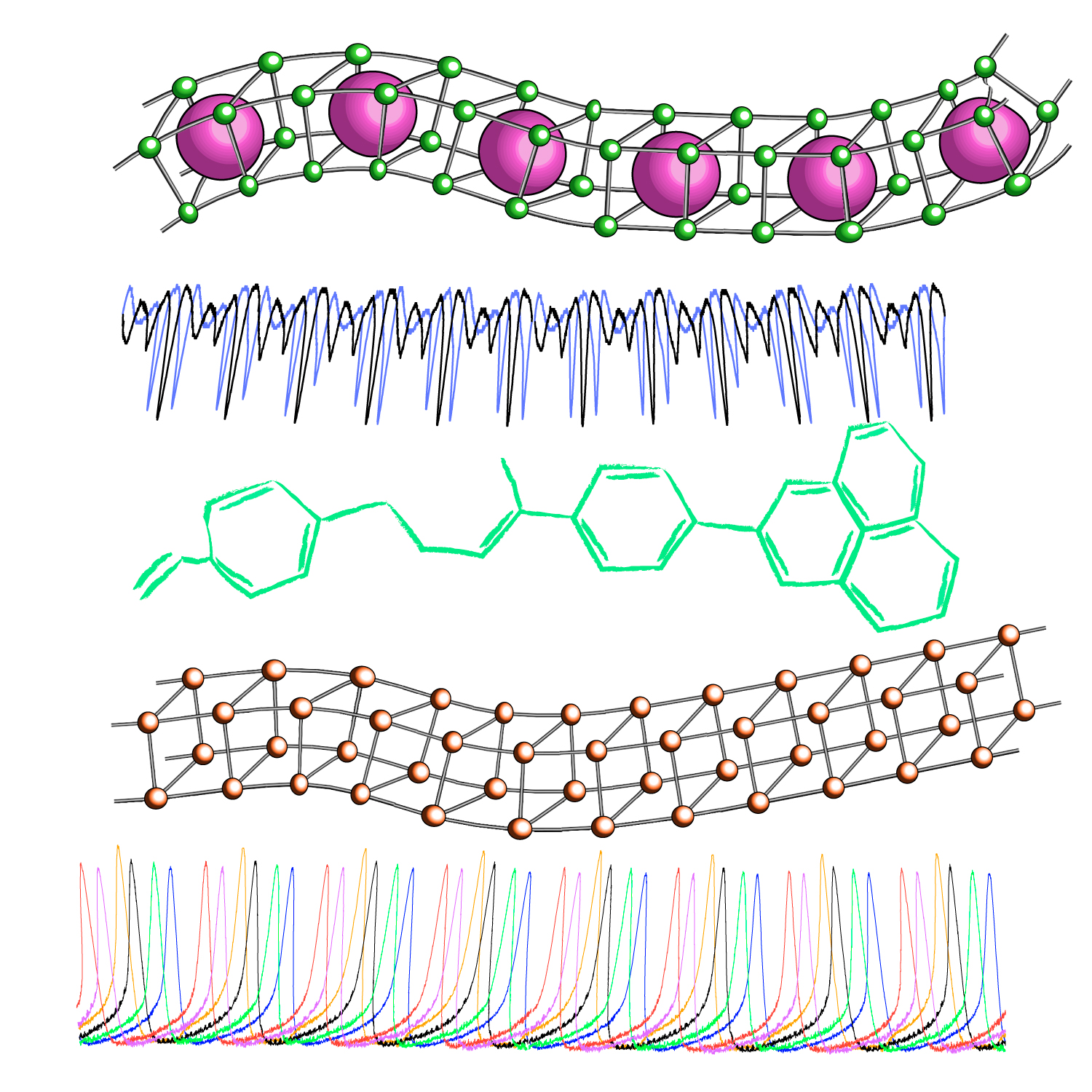I finished this back in July, but then August was tremendously busy.
Prompt 10: The Naenaiaehn Departure
A major historical event that I lacked an image for.
Materials
Faber-Castell pens on heavy water color paper
Reference materials
Soviet propaganda art
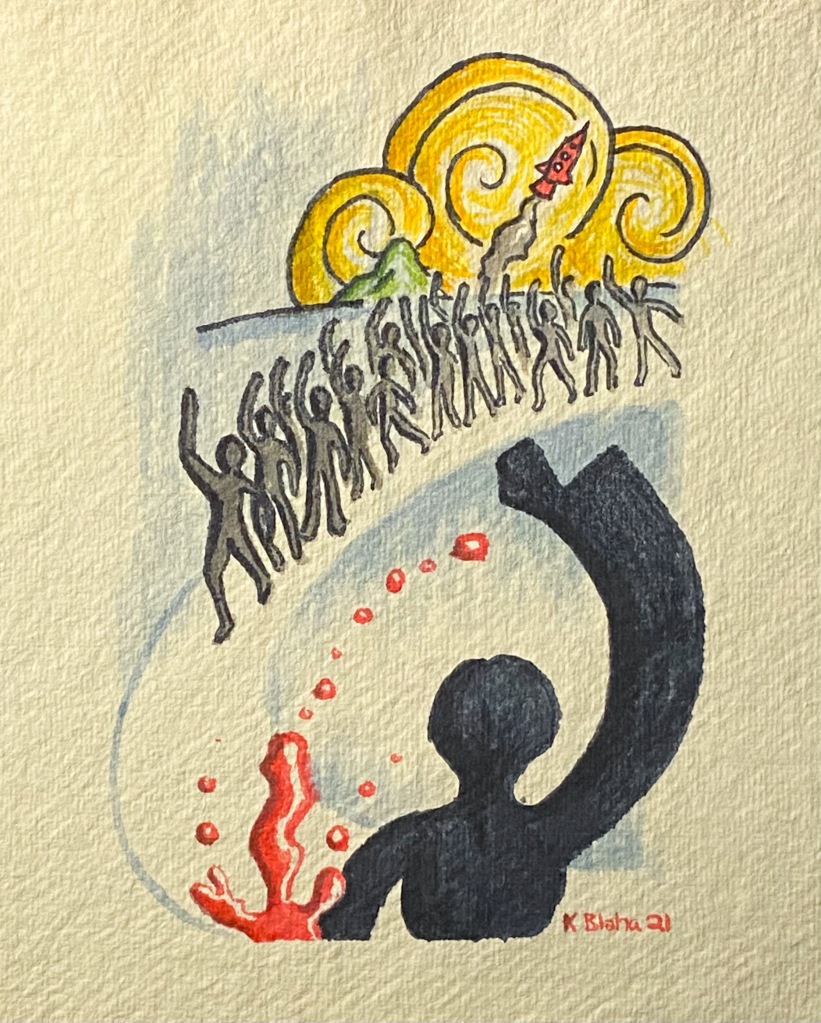
Prompt 11: Star
The Vironevaehn planet has no moon. This means that the nearby planet of Naenaiaeh is the brightest object in the night sky. In many Digurtian traditions, is it referred to as a watcher, as an eye, the “burning eye of the night”.
This depicts a traditional Digurtian funereal procession called the “burial in light”.
Materials
Gouache and Winsor-Newton water color markers on Canson Mi Teintes paper.
Reference materials
Children’s book, “The House in the Night”
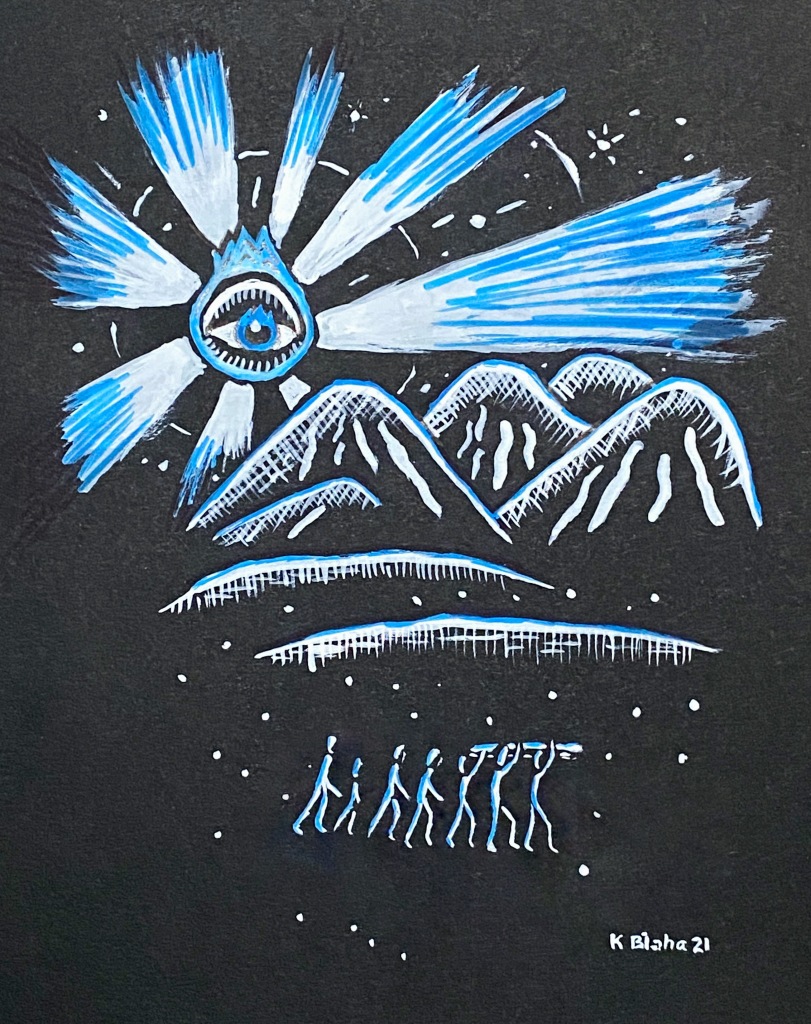
Prompt 12: Ouryici Map
This one was tricky. I studied a lot of caving maps, trying to get a sense of how to make a map for subterranean settlement. This has promise, but looks too much like a D&D map. But this is the first time I’ve tried this and I’ll learn as I go and find a style that resonates with me.
Materials
Faber-Castell on linen-textured Mohawk copy paper.
Reference materials
Tons of caving maps.
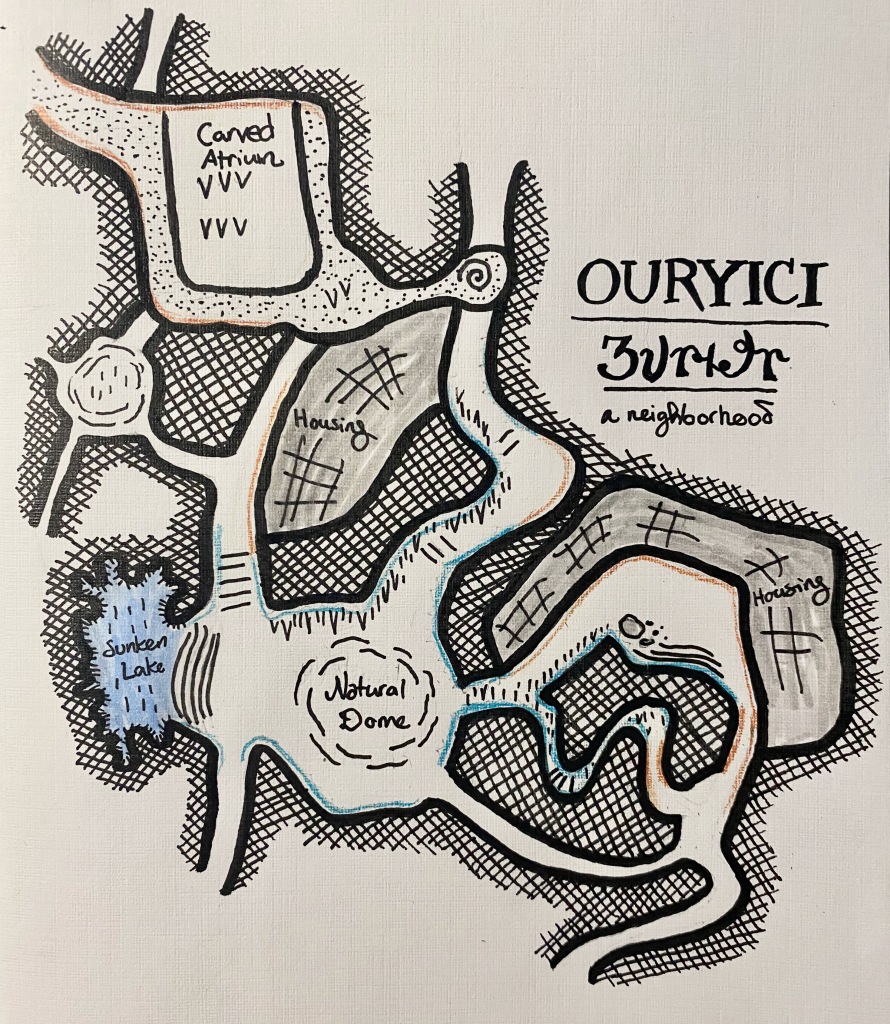
Prompt 13: Shadow
The early years of Veneva were stark. There was never enough food, and desperate struggles to produce it often produced more disappointment than crops. The volatile Vironevaehn climate meant that a good strategy one year might be poor the next. The ascetism of the early years of Veneva is represented here in the harsh shadows of the strong sun, looking over land torn by flash flooding.
Materials
Faber-Castell pens on Canson Mi Teintes paper
Reference materials
Woodcut of the Rio Grande Gorge by contemporary artist David Barbero from “The Carved Line: Block Printmaking in New Mexico”.
